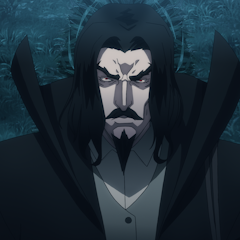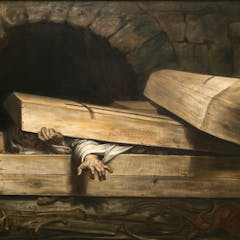
Articles on Dracula
Displaying all articles

Monsters reveal how societies define and punish deviance. Wintering’s widows make me think about the women I know who are strong and wise in ways neither recognised nor endorsed by the mainstream.

Christopher Lee’s Dracula remains was one of the game’s biggest early influences.

A recent addition to the “spooky” calendar of events are Gothic festivals, inspired by Gothic literature classics such as “Dracula”.

Renfield attempts to remodel the vampire movie to 21st century specifications.

First published in 1897, Dracula is the best-known vampire story in English. It has been endlessly adapted for screen, but today’s stories tend to dilute the horror at the novel’s heart.

Dracula’s power is not in his fangs, but in the way he disturbs the sleep of his victims.

A newsletter sends out chronological snippets from the 125-year-old novel ‘Dracula.’ Fans on the internet go wild.

The past century’s vampires have often been a bit dashing, even romantic. That’s not how the myth started out.

Wild coastlines, rich folklore and a sense that it’s a place unto itself, at once England and not, has made Cornwall the ideal setting for Gothic tales.

Did vampires ever really exist? The myth is likely related to a medical condition with symptoms that may explain many elements of centuries-old vampire folklore.

And every one of them has a happy ending.

The latest version of the Gothic vampire chiller is brought to you with the trademark humour of writers Steven Moffat and Mark Gatiss.

Ever since Dracula was born in the late 19th century, every age gets the vampire it deserves.

Written in the same house party as Mary Shelley’s Frankenstein, Polidori’s creature was based on the “mad, bad and dangerous to know” Lord Byron.

One of the reasons the myth of vampires endures and captures the popular imagination is that vampires are a powerful metaphor for a wide range of cultural practices and social problems.

New research is uncovering medieval legends about the undead in Britain.

Gothic fiction has become the ideal genre for exploring the grotesque, frightening aspects of coming of age. And disruptive girls with supernatural powers have replaced the passive heroines of old.

Other than church, the pipe organ is often perceived as belonging in horror movies. But there’s more to the instrument that spans most musical genres.

As new zombie TV spin-off Fear the Walking Dead premieres, why have these creatures ruled the horror roost for so long?

He was the best of the Draculas, an Anglo-European vampire who could be tragic and sensuous at the same time.
